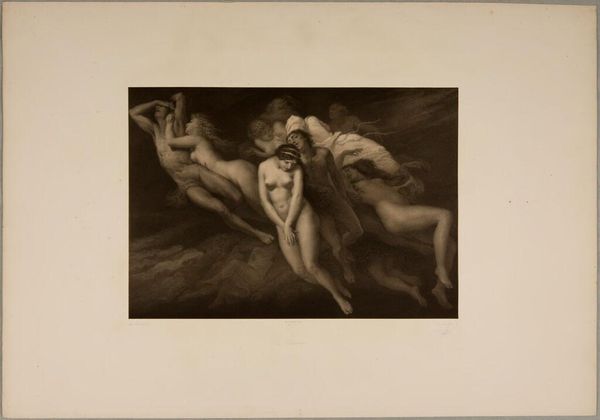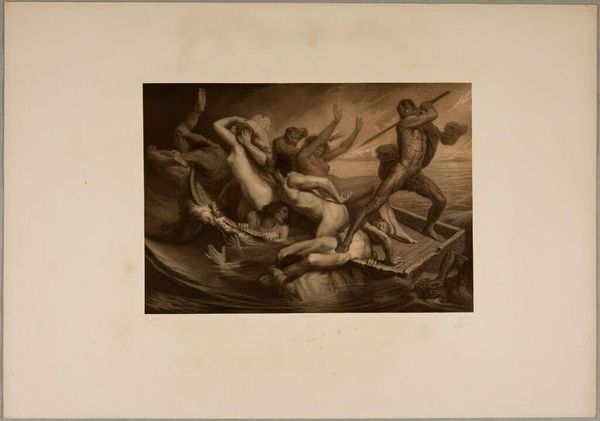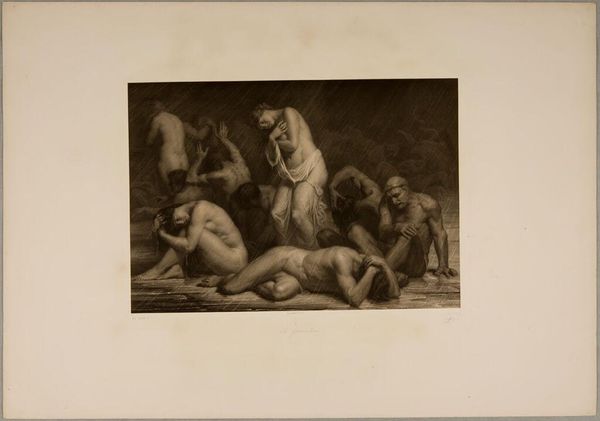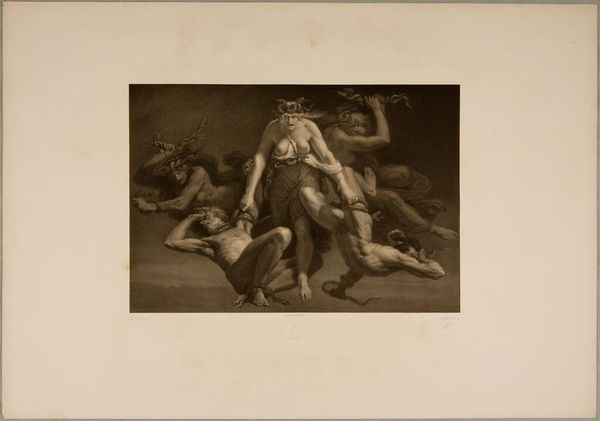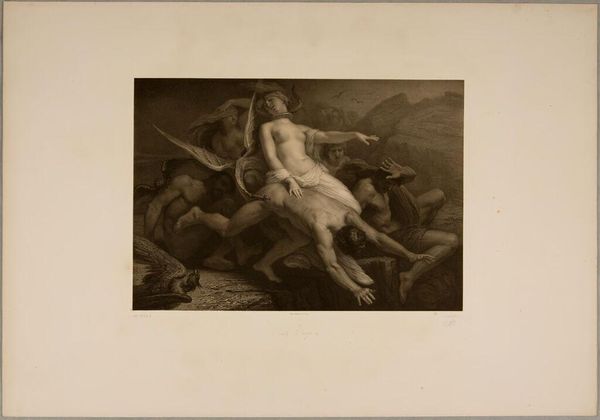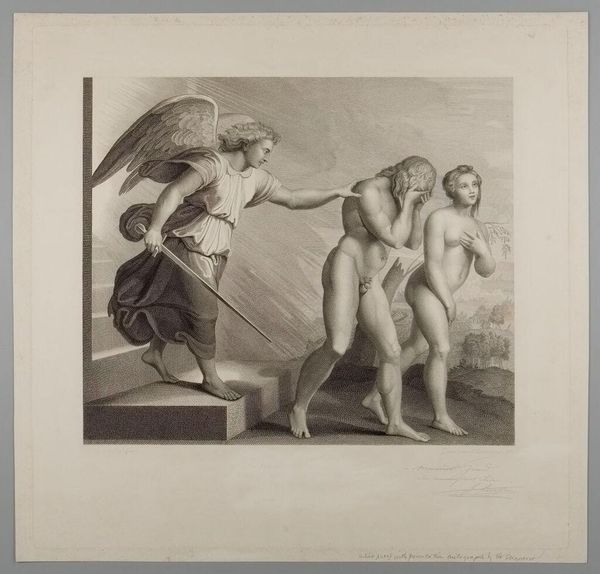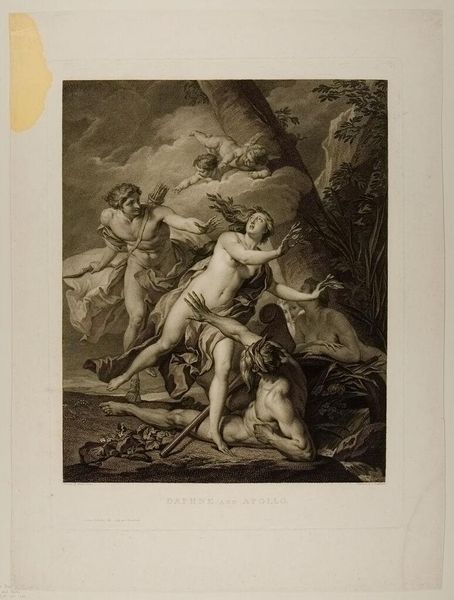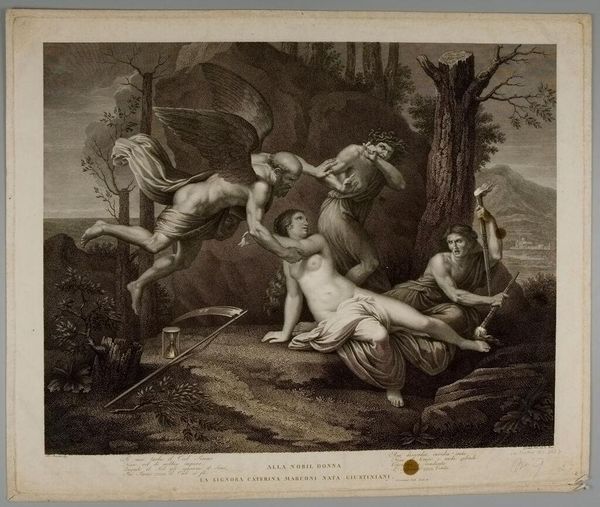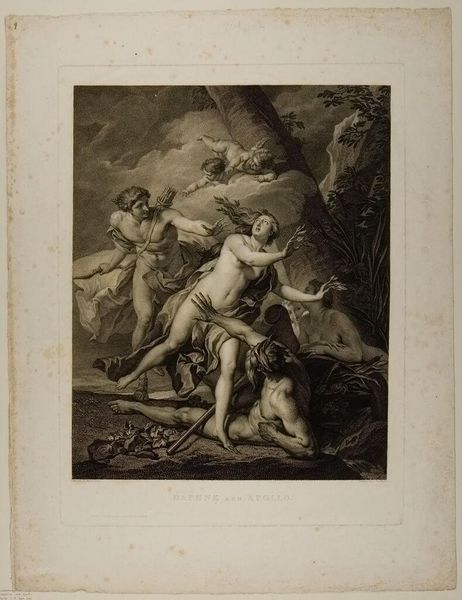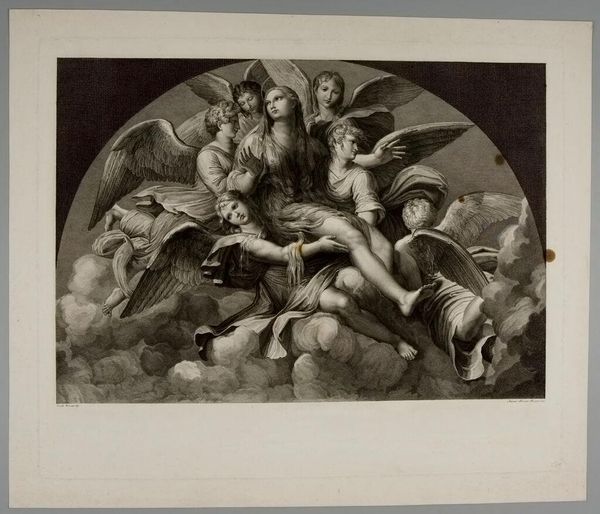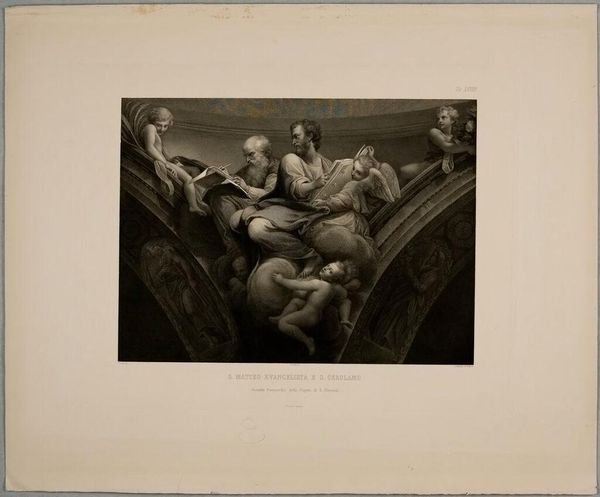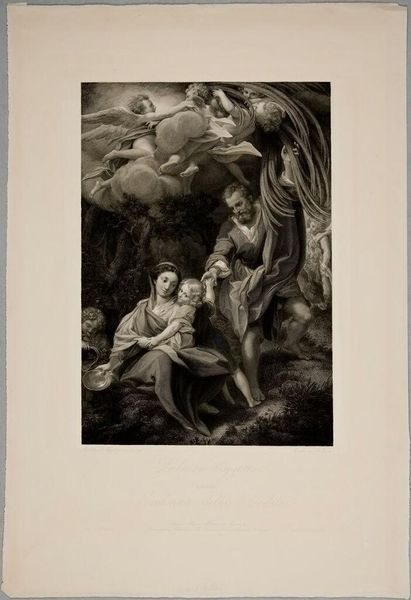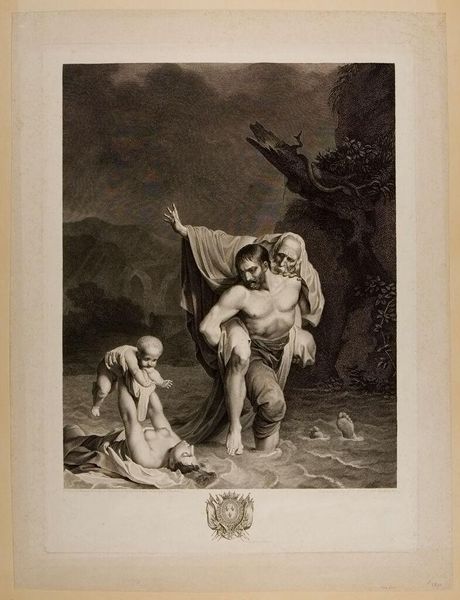
Copyright: CC0 1.0
Editor: Jean Jules Jacott’s “Pride” presents a dramatic scene of figures caught in a storm, currently residing at the Harvard Art Museums. The central figure seems to defy the elements, arms raised in what could be defiance or agony. What historical context might illuminate this intense imagery? Curator: Given the title, "Pride," and the melodramatic, almost theatrical composition, I see echoes of Romanticism's fascination with the sublime and the individual against overwhelming forces. How might societal views on morality or hubris at the time influence its reception? Editor: So, viewers might have seen this as a commentary on the dangers of excessive self-regard, a cautionary tale perhaps? Curator: Precisely. It invites us to consider the public role of art, how artists used imagery to engage with contemporary moral and philosophical debates, influencing public perception through dramatic visual narratives. Editor: That’s fascinating. I never considered how directly art could participate in shaping societal values. Curator: Indeed, and thinking about the politics of imagery helps us see how museums contribute to constructing our understanding of the past.
Comments
No comments
Be the first to comment and join the conversation on the ultimate creative platform.
